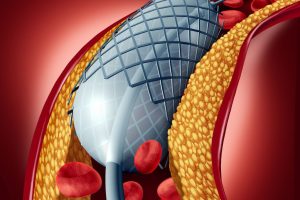
What You Need to Know About Peripheral Artery Disease
What do you know about PAD?
Peripheral artery disease (PAD) is a condition that affects the arteries that service the arms and legs. These arteries become narrowed and blocked over time, making it harder for blood to reach the limbs. A severe form of PAD is called ulceration PAD (UPAD). However, most cases of PAD are not that severe. Even though the symptoms of PAD may seem mild and insignificant, PAD can have a serious impact on your health. It can cause pain, numbness, and even gangrene in the affected limbs. If you notice any of these signs, it’s probably time to contact us.
What are the Symptoms of Peripheral Artery Disease?
- Pain in the affected limb – There may be a sudden onset of pain in your limb or a dull, aching pain.
- Numbness – This may occur anywhere in the limb, but is most noticeable in the fingers and toes. When the symptoms of PAD first appear, you may not notice any problems in the affected fingers and toes. However, as the disease progresses, the numbness can spread to the rest of the limb.
- Gangrene – Gangrene is a serious condition in which the tissue in your limb dies. You may notice that the affected limb is pale, warm, and painful.
Risk Factors for Peripheral Artery Disease
- Family history of PAD – This means that your relative has had PAD. If you have a family history of PAD, you may be at a higher risk of developing the condition.
- Certain medical conditions – People who have diabetes, high blood pressure, or high cholesterol are at a higher risk of PAD. You should also consider getting a yearly PAD screening if you’re an athlete, particularly if you participate in activities that put a lot of stress on your arms and legs.
- High-risk jobs – People who work in jobs that put a lot of stress on their arms and legs are at a higher risk of developing PAD, too.
- Smoking – Smoking is linked to PAD and should be avoided at all costs.
How is Peripheral Artery Disease Diagnosed?
The symptoms of PAD are often vague and nonspecific, making it easy to misdiagnose. If you suspect that you have PAD, you may be asked to have a blood test. The results of this blood test will tell our doctors whether or not you have PAD. We may also perform an angiogram. An angiogram is a special type of X-ray that allows us to see the arteries in your legs. If the arteries in your legs are narrowed or blocked, PAD is the most likely diagnosis.
What to do about PAD?
Whether you have mild, moderate, or severe PAD, it is important to get regular checkups. If your symptoms are mild, you may not need to be seen as frequently. However, if your symptoms are severe, you will need to visit us more often. With regular checkups, you can catch problems with your arteries early, get the help you need, and avoid the need for serious procedures like amputation.



